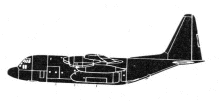Incident Overview

Description
At the conclusion of a flight from Hannover Airport (HAJ), the aircraft diverted from Berlin-Tempelhof after two unsuccessful attempts to land there had been made. Both approaches were discontinued because the pilot was not able to complete the landing by visual reference to the ground. Berlin-Tegel, the alternate airport, reported wind calm, visibility 1.5 km. and 4/8 cloud at 300 ft. and an approach by ILS on runway 26L there was made down to 400 ft., when the approach lights were sighted, and was then continued solely by visual reference. The approach and runway lighting was being modified at the time and this involved displacing the threshold of runway 26L by some 900 ft. And “sterilising” the first part of the runway which was marked with special lights. However, as Tegel is a military aerodrome, details of these lights, including the provision of a VASI and the displacement of the threshold, had not been generally promulgated and so were not known to the captain of G-AOHO. The aircraft touched down some 200 ft. short of the beginning of the runway (i.e. 1100 ft. short of the displaced threshold) and shortly afterwards the nose wheels struck a small mound of earth and then touched the ground just before the concrete of the runway. The nosewheel leg slowly collapsed until the inboard propellers scraped the surface of the runway; the aircraft came to rest in a nose down attitude, still supported on its mainwheels and folded nosegear.
Primary Cause
Pilot inability to complete landing due to a pilot?s inability to complete the landing.Pilot inability to complete landing due to a pilot?s inability to complete the landing.Share on:





